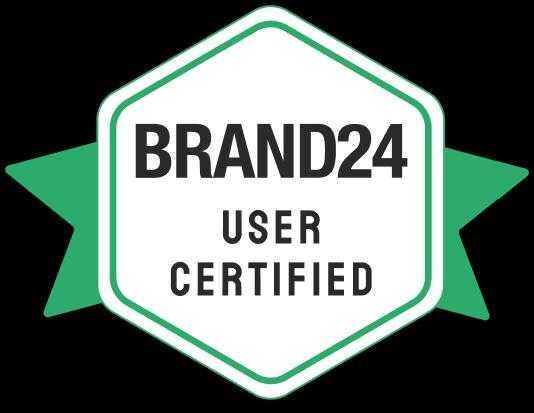As a web developer, your main responsibility is to create web applications. This involves not writing code but also handling tasks like troubleshooting errors and managing servers.
Several web development tools are available to enhance the development process. These tools often come equipped with automated features and security measures, which can augment the efficiency of your web applications. With the continual progression of numerous web application development tools, pinpointing the most suitable one for your needs can be challenging.
This article will guide you in choosing the most proficient web development tools available. Moreover, we have compiled a list of the twenty options catering to beginners and experienced developers.
Key Factors to Consider When Selecting a Web Development Tool
As a web developer, your job involves utilizing web development tools to create, oversee and troubleshoot applications. This article aims to provide a compilation of web development tools while considering some important factors;
Complexity: It is essential to choose a web development tool that suits your needs and skill level.
Security: When it comes to security, the tool should provide features that handle cross-site scripting (XSS), Web Application Firewalls (WAF) and conduct regular security audits.
Scalability: An ideal tool would be versatile enough to accommodate small and large-scale projects.
Cost: The pricing structure is a vital aspect to consider. Some tools are free, while others need to be subscribed to on a monthly or annual basis.
Compatibility: The tool should be compatible with your programming language.
System Support: Ensure that the tool provides sufficient support in case of software malfunctions.
In this article, we will explore various high-quality web development tools, each serving a particular purpose, such as:
Web Application Development Frameworks: These frameworks simplify web development by offering a prebuilt codebase and guidelines.
Task Managers: These tools automate repetitive tasks, eliminating the need for micromanagement.
Code Editors: Equipped with functionality like syntax highlighting, code auto-completion, and debugging to ease code writing and modification.
Web Prototype Development Software: This tool provides the features necessary for creating wireframes, prototypes, and UX/UI designs.
Package Managers: These simplify the process of downloading and installing libraries and frameworks.
Version Control Systems (VCS): They help monitor code changes, fostering better collaboration in team projects.
Browser Developer Tools: They allow developers to test HTML and CSS changes in the browser and write and debug JavaScript code.
API Testing Tools: They allow for testing the essential functionality of a mobile application before its launch.
JavaScript Library Resources: These consist of prewritten JavaScript code snippets to accomplish common tasks.
Container Management Software: This type of software bundles the application source code with its libraries and dependencies, ensuring efficient and reliable operation on any platform.
CSS Preprocessors: CSS preprocessors reduce code errors, create reusable code fragments, and maintain code compatibility by automating repetitive tasks.
Web Server Software: This software stores and delivers website data in response to requests.
Basic Tools for New Web Developers
When you are new to the field, it can be difficult to navigate the multitude of tools available. It's important to begin with a collection of user tools that will enable you to learn without feeling overwhelmed. We have put together a curated list of tools for aspiring web developers to help you navigate easily. These tools are designed to be user-friendly.
Here is the list of tools:
Microsoft Visual Studio Code: Open-source, Cross-platform Code Editor
Visual Studio Code is an open-source, cross-platform code editor. The software includes features such as highlighting syntax, suggesting completions, and incorporating Git commands. These functionalities make coding easier and faster.
Features:
Support multiple programming languages: C++, JavaScript, Python, and more.
Extensions: A large extension collection is available in the marketplace.
Command Palette: Enables access to various commands and operations.
IntelliSense: Suggests code using variables, syntax, and programming language.
Git Integration: Execute Git commands such as commit, pull, and push.
GitHub: Open-source Repository Hosting Service
GitHub is a leading cloud-based, open-source Git repository hosting platform. It offers a user-friendly web interface, exceptional networking and branding tools, and flexible project management tools for teams, projects, and workflows of all kinds. The free plan offers unlimited repositories, collaborators, and 500 MB of storage space, while additional features are available with subscription-based plans.
Features:
GitHub Advisor: AI-powered tool suggesting code completions and functions.
Pull requests and Code reviews: Allows assigning up to ten individuals to work on specific issues.
Codespaces: A feature-packed tool including a text editor, debugging tools, Git commands, and more.
Automation: Capable of automating CI/CD, testing, project management, and onboarding.
Security Features: Includes code analysis tool, security audit journal, and SOC 1, and SOC 2 compliance.
User Management Tools: Offers varying permissions and access levels for various contributors.
Sublime Text: Lightweight, Feature-rich Text Editor
Sublime Text is an option for those who're new to coding, offering a lightweight yet sophisticated text editor for writing code markup and plain text. It enables simultaneous multi-line editing via parallel editing. This code editor is free to install but requires a license for use.
Features:
Goto Anything: Enables quick navigation between files and functions.
Minimap: Useful for navigating and editing large volumes of code.
Support: Support for JavaScript, Typescript, JSX, and TSX infrastructure. Extensible via Python API.
Multiple selections: Locate, modify, rename, and manipulate multiple lines of code.
Node Package Manager (npm): JavaScript Software Registry
npm is a JavaScript package manager that facilitates the distribution and deployment of local or global packages. It helps JavaScript developers discover and install code packages for server-side or networking applications, simplifying the development process.
Features:
Command-Line Interface (CLI): Enables installation of packages and keeps track of their versions and dependencies.
Security Auditing: Identifies security vulnerabilities in your project.
Large Database: Access to a publicly available repository of JavaScript packages.
Collaboration Features: Manage team permissions and incorporate workflows with the Team plan.
Chrome Developer Tools: In-Browser Web Editing & Diagnostics
Chrome Developer Tools is an in-built feature set in the Google Chrome browser. Developers have the capability to analyze and modify the layout of web pages and troubleshoot any issues related to JavaScript code.
Features:
Local overrides: Save modifications made to a web page to your local computer.
Lighthouse: An audit tool for web pages providing performance, accessibility, PWA, and SEO reports.
Web design elements: Inspect Element tool for examining various page designs and layout modifications.
Console utility: Useful for debugging JavaScript code and creating live expressions.
Profiling tools: Helps in monitoring a web page's memory usage.
Integrated security mechanisms: Allow users to check a website's SSL certificate and TLS status.
Device configuration: Optimize device performance, test responsiveness, and restrict network speed.
Marvel: Web-based Collaborative Design & Prototyping
Marvel is a top pick for quick and easy project design, providing robust prototyping and user testing features. It's a web-based collaborative design platform lets web developers and designers easily create high-quality prototypes and design specifications
Features:
Developer handoff: Produces CSS, Swift, and Android XML code.
User testing: Records user interaction with your prototype, capturing audio, video, and screen.
Integrations: Supports social media apps, project management, and productivity applications.
Modifiable designs: Offers drag-and-drop wireframe templates for different types of devices.
Advanced Tools for Seasoned Web Developers
As you progress from being a beginner to an advanced developer, the tools you use also undergo a transformation. Mastering web development at a level demands a combination of imagination, rational thinking, and a toolkit filled with advanced technologies that can keep up with your constantly evolving expertise and complex projects.
This guide is crafted for those who've scaled the early stages of web development and are now navigating the complexities of advanced development.
Postman: Tool for API Testing and Development
Postman started as a Google Chrome extension and has become a leading application programming interface (API) testing tool. Web developers can utilize this platform to construct, evaluate, distribute, and document APIs.
Features
Collaborative Capabilities: The tool offers enhanced team collaboration through features like team discovery, comments, and workspaces.
API Monitoring and Reporting: With its built-in API monitoring, debugging, and request execution capabilities, Postman helps visualize API data.
Desktop Application: The desktop app allows users to monitor the tasks of other team members and manage APIs easily.
API Governance: Ensures API designs are secure and high-quality by identifying discrepancies and security vulnerabilities.
CI/CD Integration: Postman comes with a feature called Newman which integrates CI/CD tools like Bamboo, Jenkins, and TeamCity with APIs.
API Documentation Tools: Generate API documentation automatically that can be shared privately or publicly.
Besides testing, cybersecurity measures are needed since web development is susceptible to different types of vulnerabilities. Furthermore, in development, it is common for developers to connect to networks and servers. However, not all of these connections are secure. May pose a risk of data breaches. To safeguard your activities, one practical measure is using a Virtual Private Network (VPN) and Antivirus software. Since most developers use macOS for development, choosing a security software that is optimized for apple devices can make a significant difference in both performance and ease of use.
Docker: Open-source Platform for Software Deployment
Docker is an open-source software deployment application that operates using virtual containers. It lets developers deploy and scale applications quickly.
Container Evolution: A container builder, reusable templates, and container versioning are available with Docker.
Community: Docker has a massive community with thousands of active contributors across various platforms.
Portability: Docker ensures that complex applications built or deployed on a computer will function as intended.
Automation: Docker allows users to automate their tasks with cron processes and Docker containers, saving time and effort.
Flutter: Cross-platform Mobile Application Development Framework
Supported by Google, Flutter is an open-source web development tool for creating platform-independent mobile applications.
Features
IDE Support: Flutter is compatible with various IDEs and code editors, including Android Studio, IntelliJ IDEA, Emacs, and many more.
Mobile Development: Developers can simultaneously develop Android and iOS applications.
Hot Reload: A feature allowing developers to see real-time code changes.
Variety of Widgets: It provides a variety of customizable widgets for creating functional applications.
Responsiveness: Flutter's declarative nature and layout system enable the app to adapt to different screen sizes.
ReactJS: JavaScript Library for Building User Interfaces
ReactJS is an open source JavaScript library that empowers developers, in building user interfaces for websites and mobile applications.
Features
Virtual DOM: ReactJS organizes HTML, XHTML, or XML-based documents into a tree-like structure for easier parsing by web browsers.
Reusable Components: Components in ReactJS have their own logic and controls, simplifying code tracking for large-scale projects.
Lightweight: ReactJS is extremely lightweight, thanks to its ability to represent client-side data readily at the server end.
One-Way Data Flow: One-way data exchange in React makes testing easier.
Easy Migration: Transitioning between versions is typically straightforward with automated tools provided by Facebook.
Conclusion
Web development tools play a role in simplifying both end and back-end development workflows. It's important to choose tools that align with the scale and budget of your project, as they can significantly impact its success and efficiency. A variety of tools are available, such as code and text editors, version control systems, web frameworks, debuggers, libraries, prototyping tools, and container software.




















